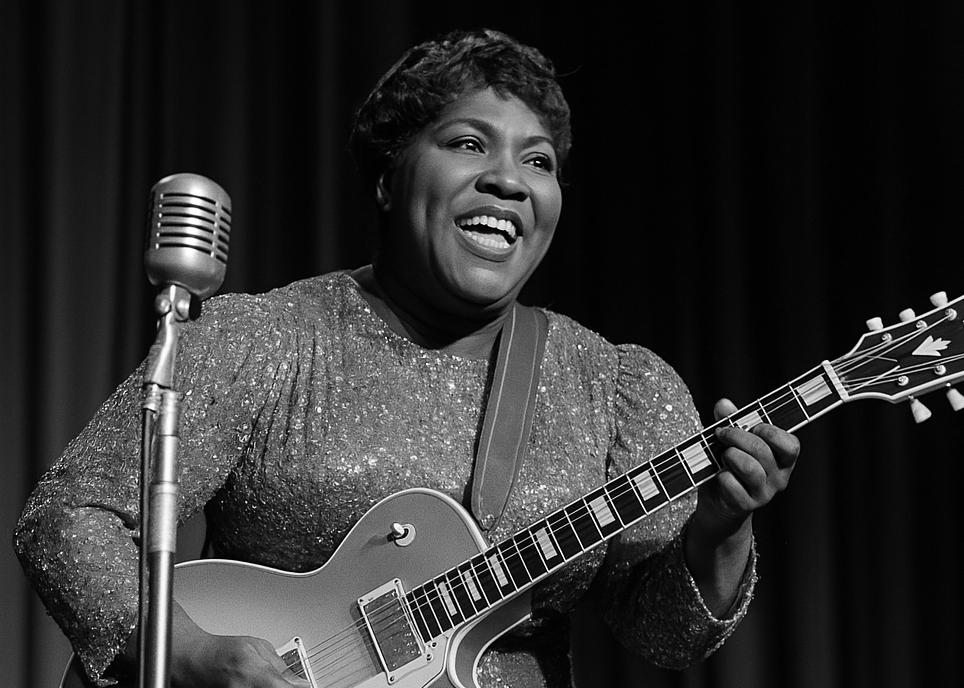
They say rock and roll was born loud. That it cracked like lightning and tore through the fabric of polite society. That it arrived screaming, stomping, shouting, demanding to be felt as much as heard.
But in the very beginning, there was only one. No screaming crowds, no genre wars, no record executives trying to package rebellion.
Just a voice, a rhythm, and a guitar plugged in with holy fire.
The first rock album didn’t come from a greasy garage or a smoke-filled bar. It didn’t wear leather or throw televisions out of hotel windows. It was born in gospel, but it wasn’t content to stay there. It wanted to move. It wanted to shout.
The first rock star didn’t enter to pyrotechnics or a six-piece backing band. She walked onstage with confidence, smiled at the crowd, and let her fingers do the talking. She played a guitar like it had been waiting for her, like she was finally letting it speak its truth.
The first rock album was made by a woman who played louder than the rules allowed.
The first rock star was a woman who didn’t ask permission.
She lit up stages. She slid between rhythm and blues like a sermon on fire. She mixed gospel’s soul with a backbeat that couldn’t sit still. Her voice was praise and defiance. Her guitar work? Straight-up prophecy.
And the album—yes, the first—was unlike anything the world had heard. Wild. Raw. Electric. It had riffs that barked and rolled, shouts that shook the rafters, and rhythms that moved people’s bodies before they even knew what hit them.
And it all came from a single figure.
Not a rebel in sunglasses. Not a sex symbol. Not a white boy with swagger.
No. The first rock star, the first true architect of this genre we love, was Sister Rosetta Tharpe.
A lady with a Gibson guitar and God in her lungs.
And now you know the rest of the story.


